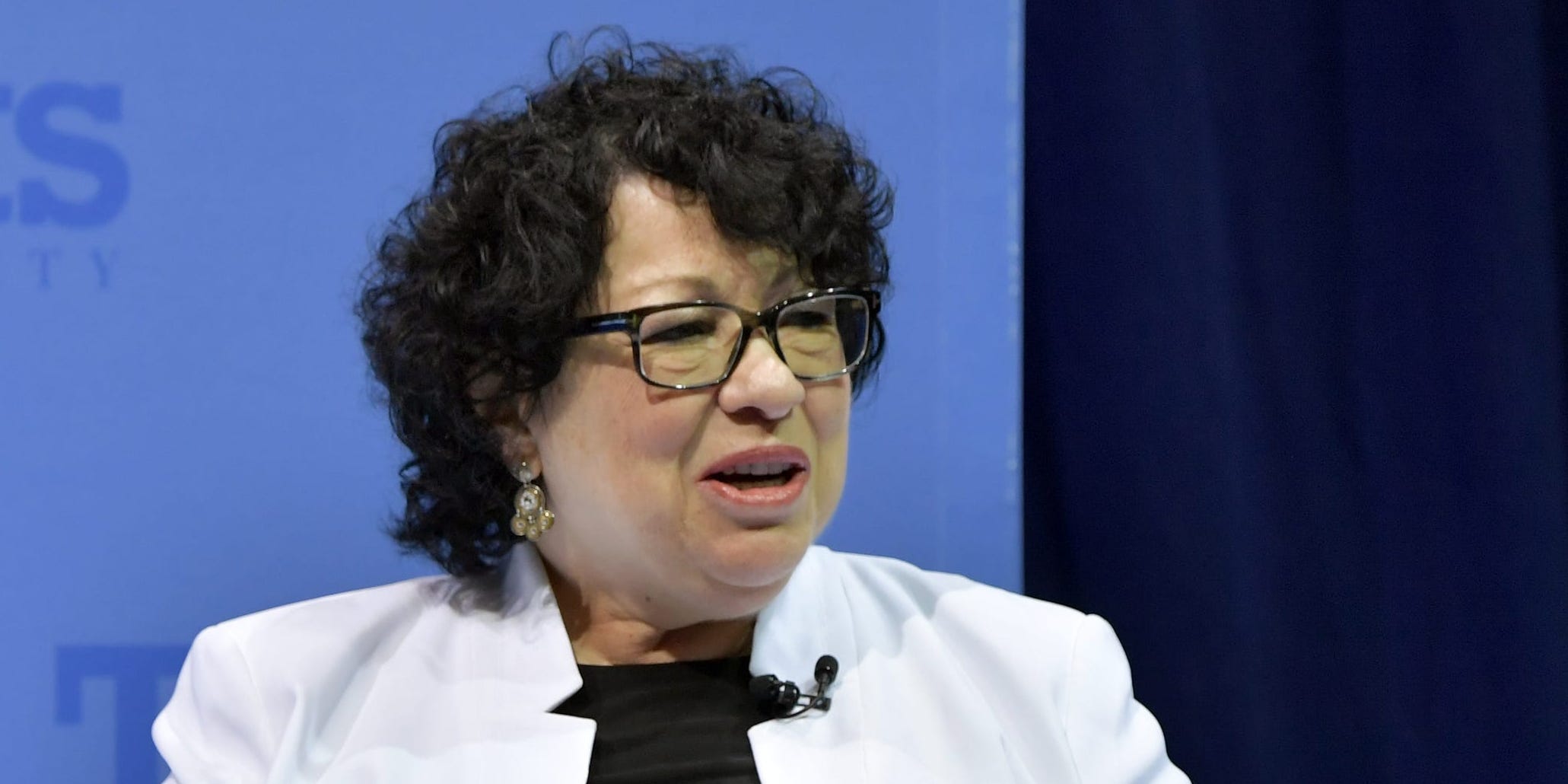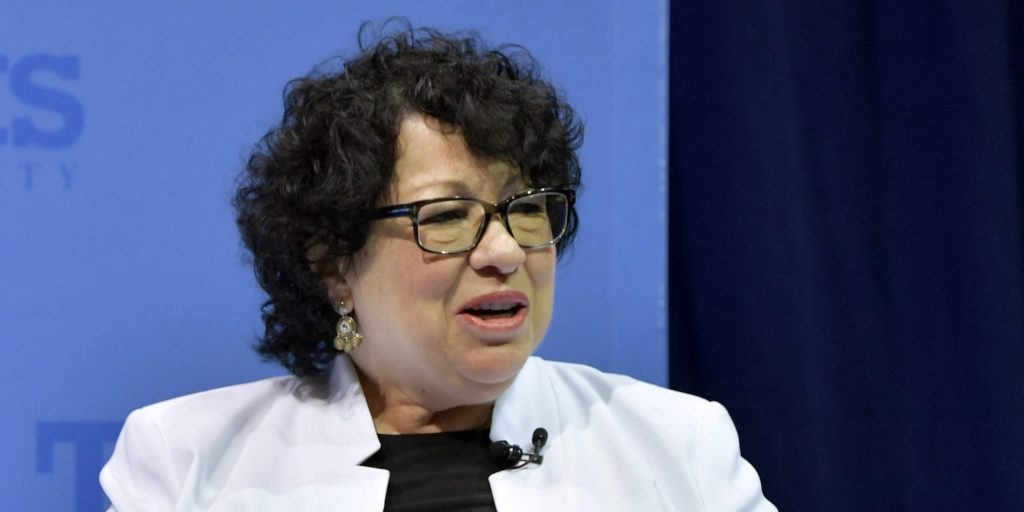
Paul Marotta/Getty Images
- Justice Sonia Sotomayor said the Supreme Court changed its arguments structure partly because female justices were interrupted more than male justices.
- The Supreme Court now allows each justice to take turns asking questions during arguments.
- Previously, the court would only engage in free-for-all-questioning.
Justice Sonia Sotomayor said on Wednesday that the Supreme Court changed its oral arguments structure partly because studies showed that female justices were interrupted more by their male counterparts than vice versa, according to CNN.
One such study found that during arguments in the 2015 term, Justices Sotomayor, Elena Kagan and the late Ruth Bader Ginsburg were interrupted at double-digit rates far more often than their male colleagues.
"We observe only two instances of a male Justice being interrupted by another single Justice at a double-digit rate (ten or more times), but seven instances of a female Justice being so interrupted. Note that this disproportionate rate of the female Justices being interrupted occurred despite the fact that there were only three women," the researchers wrote.
The data also showed that Sotomayor, for example, was interrupted a total of 57 times that term, roughly double the amount of times that four male justices were interrupted.
Sotomayor, who's served on the high court for 12 years, said she recognized the imbalance "without question" much before the court decided to change its system – and found a way to deal with it, per CNN.
"I interrupt back," she told an audience during a virtual event at the New York University School of Law.
Sotomayor pointed out that the problem is also seen elsewhere in society, saying: "Most of the time women say things and they are not heard in the same way as men who might say the identical thing," according to the CNN report.
The studies about interruption had an "enormous impact," Sotomayor said, and prompted Chief Justice John Roberts to become "much more sensitive" about justices cutting each other off. He offered to mediate if necessary, she added, per CNN.
The Supreme Court went remote last spring as a result of the coronavirus pandemic, with the justices hearing arguments for cases via teleconference and the audio being livestreamed for the first time in history. In another new twist, each justice in order of seniority was given time to ask questions. The practice was different from the usual free-for-all questioning that took place in person.
As the justices returned to the courtroom to kick off the new term last week, the court kept the new rule in place and took on a hybrid approach. The justices still speak up freely during arguments, but after each lawyer's time has expired, they take turns asking questions.
The decision has brought in some change. Justice Clarence Thomas, infamous for not speaking or actively participating in sessions, asked questions in every single argument of last term, and is continuing to do so in this one. He's the most senior justice, sitting on the bench for the past three decades.
The court will rule on major cases involving abortion and gun rights this term that could have dramatic effects on the country.

